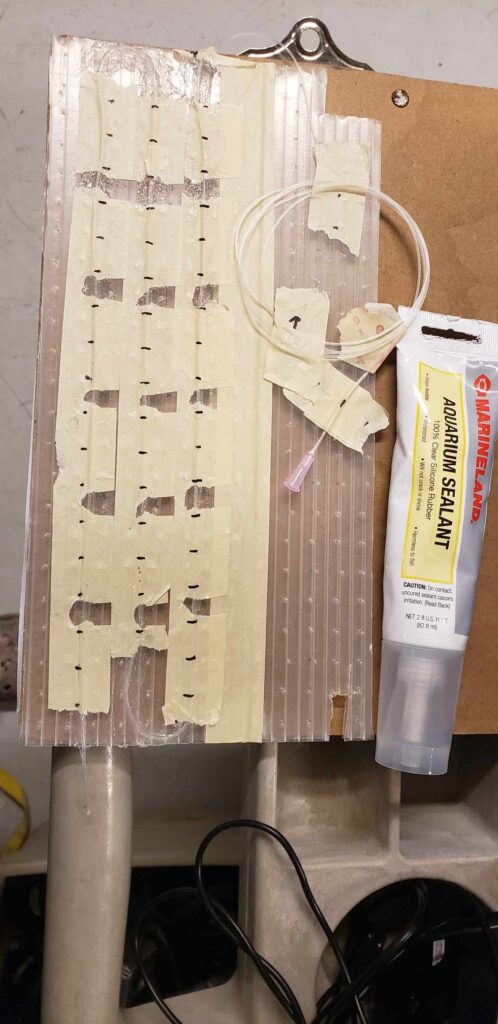December calls for a short and quick blog post. One semester is coming to a close (with final grades due soon), another set to begin (requiring course development), a holiday season in which friends and family are trying to schedule time together and populations of research animals who do not follow this “holiday break” concept (frankly, they even struggle with daylight savings time).
This month will be all about the second iteration of the cue delivery system (see a couple of months back for the first). The syringe sprinkler system worked great but had one major downside: proximity.
In updating the behavioural chamber to be enclosed in a box (for video quality and visual stimuli minimization), it became apparent the syringe would not work. We also wanted to eliminate the physical disturbance to the water that the high pressure of the sprinkler syringe created.
We created a cue curtain, woven across the bottom surface of the behavioural chamber (a future blogpost on the chamber is forthcoming – the article describing it is under peer review as I write this) and perforated it with evenly spaced tiny holes. This allowed us to create a curtain of dispersed cue without the burst of water that came with the larger system.

The curtain is constructed of polyethylene tubing that is then connected to a blunted needle which goes on a syringe full of whatever cue you need. The black tick marks each represent where the tiny holes in the tubing were made, and the small rectangle cutouts in the tape are where sealant is securing the tubing down to the surface. The wound tubing allows for us to run the line down underneath the cover for the chamber and operate it from across the room.
Dye tests are showing promise and we have our first fish in experiment today testing to see if they are responding when we inject a cue through this “cue curtain”. Exciting times leading into the semester break!